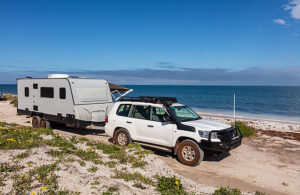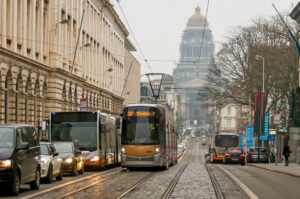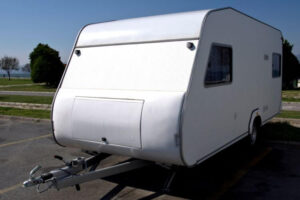Introduction:
The caravan lifestyle has seen a resurgence in recent years, with many individuals and families seeking the freedom and adventure that comes with life on the road. Building your own caravan not only provides a sense of accomplishment but also allows for a personalized touch, ensuring that every aspect of the caravan suits your needs and preferences.
Benefits of Building Your Own Caravan:
Building your own caravan offers numerous advantages. Firstly, it allows for customization, ensuring that every nook and cranny is tailored to your specific requirements. Whether it’s a particular layout, specific materials, or unique features, DIY caravans provide a level of personalization that pre-built models can’t match. Additionally, building your own caravan can often be more cost-effective in the long run, as you can source materials and parts according to your budget and avoid dealer markups.

Preparation:
Before diving into the caravan-building process, it’s essential to assess your capabilities and resources. This includes understanding the skills you possess, the tools you have access to, and the space available for the build. It’s also crucial to set a realistic budget, factoring in all potential costs, from materials to labor.
Setting a Budget and Finding a Workspace:
Setting a budget is a critical step in the caravan-building process. It helps in determining the scale of the project and ensures that you don’t overspend. It’s essential to account for all potential expenses, including unexpected ones. Additionally, finding a suitable workspace is crucial. This space should be large enough to accommodate the caravan and provide ample room for movement and storage of materials. Ideally, it should also be sheltered to protect against adverse weather conditions during the build.

Design and Planning:
A well-thought-out design is the foundation of any successful caravan build. This involves creating a detailed blueprint of the caravan, factoring in dimensions, weight distribution, and functionality. Modern tools and software, such as AutoCAD, can assist in visualizing the design, ensuring accuracy and feasibility.
Importance of a Detailed Blueprint and Tools for Design:
A detailed blueprint serves as a roadmap for the entire building process. It provides clarity on the placement of each component, from windows and doors to electrical outlets and plumbing fixtures. Such meticulous planning helps avoid costly mistakes and ensures a smooth building process. Tools like AutoCAD offer a digital platform to create precise designs, allowing for adjustments and modifications with ease. They also provide a visual representation, aiding in understanding the spatial dynamics of the caravan.

Materials and Components:
The choice of materials plays a pivotal role in the durability, comfort, and aesthetics of the caravan. From the exterior shell to the interior furnishings, selecting the right materials ensures longevity and enhances the overall caravan experience. Additionally, sourcing caravan-specific parts, such as chassis components, plumbing fixtures, and electrical systems, is crucial for functionality and safety.
Choosing the Right Materials and Sourcing Caravan-Specific Parts:
The materials chosen for the caravan will determine its durability, weight, and maintenance requirements. For instance, aluminum and fiberglass are popular choices for the exterior due to their lightweight and rust-resistant properties. Inside, materials should be chosen based on comfort, aesthetics, and space-saving capabilities. When it comes to caravan-specific parts, it’s essential to source quality components that comply with safety standards. This includes everything from the chassis and suspension systems to lighting and ventilation systems.
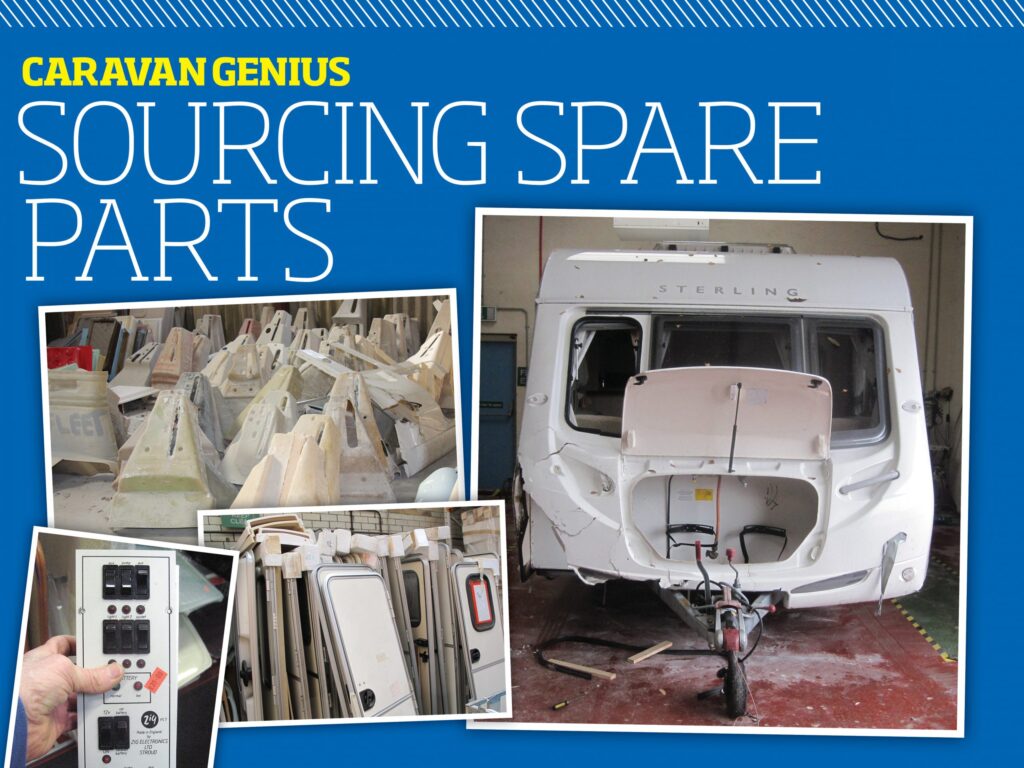
Construction Process:
Building a caravan is a meticulous process that requires attention to detail at every step. From laying the foundation with a robust chassis to installing the interior fixtures, each phase is crucial to the caravan’s overall structure and functionality. Safety precautions, such as wearing protective gear and ensuring proper ventilation, are paramount to prevent accidents and ensure a smooth building process.
Safety Precautions and Step-by-Step Guide:
Safety should always be a priority when building a caravan. This means wearing appropriate protective gear, such as gloves, safety goggles, and masks, especially when working with potentially hazardous materials or tools. It’s also essential to ensure proper ventilation, especially when painting or using adhesives. A step-by-step guide serves as a checklist, ensuring that each phase of the construction is completed accurately and efficiently. This systematic approach helps in tracking progress and ensures that no crucial step is overlooked.
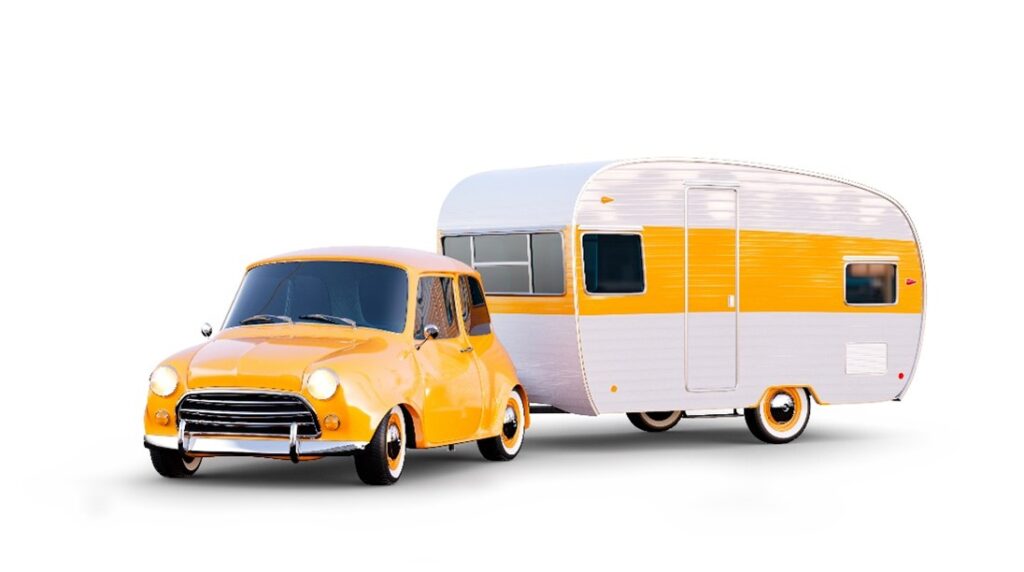
Electrical and Plumbing:
Setting up the electrical and plumbing systems in a caravan is a complex task that requires precision and expertise. The electrical system powers all the appliances and lighting, while the plumbing ensures a steady supply of water and proper waste disposal. Both systems need to be efficient, compact, and safe, given the limited space and mobility of a caravan.
Detailed Guide on Setting Up the Electrical System:
The electrical system of a caravan is its lifeline, powering everything from lights to appliances. It’s essential to have a robust and safe electrical setup, often requiring a combination of 240V power and 12V for different appliances. Wiring should be meticulously planned to avoid overlaps and ensure safety. Circuit breakers, switches, and power points need to be strategically placed for accessibility and efficiency. Given the complexities, it’s often recommended to consult or hire a professional to ensure the system is up to standard and safe.
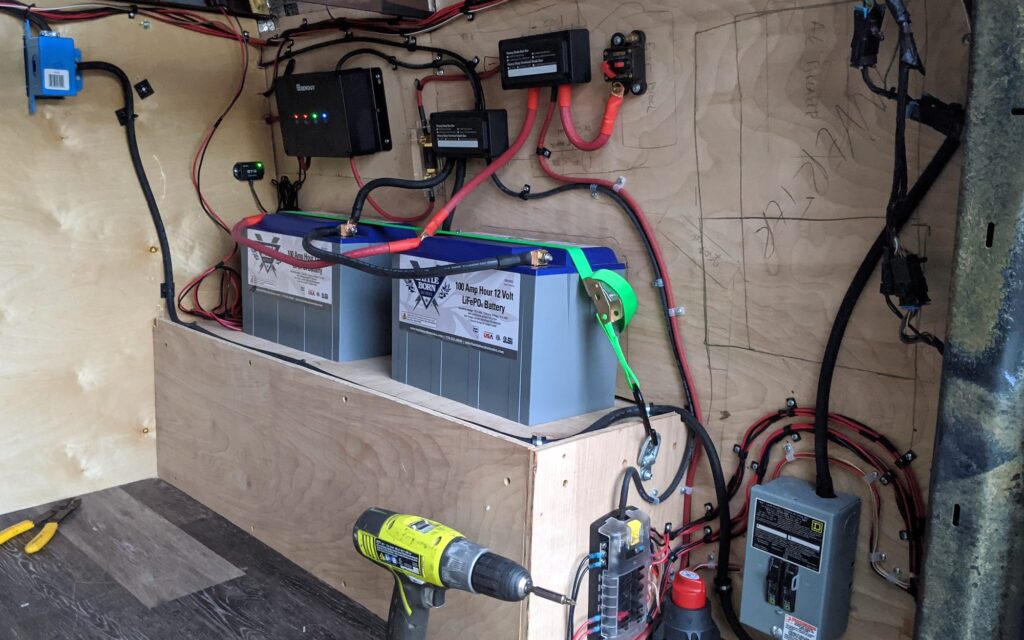
Plumbing Essentials and Best Practices:
Plumbing in a caravan ensures you have access to water for cooking, cleaning, and sanitation. The system typically includes freshwater tanks, wastewater tanks, pumps, and pipes. Given the limited space, it’s crucial to design a compact yet efficient plumbing system. Using flexible pipes can help navigate tight spaces, and installing efficient pumps ensures consistent water pressure. Regular maintenance, like checking for leaks and cleaning tanks, ensures the system’s longevity and prevents issues down the road.
Interior Design and Furnishing:
The interior of a caravan is where you’ll spend most of your time, so it’s essential to make it comfortable, functional, and aesthetically pleasing. Space is at a premium, so furniture and appliances need to be chosen with care. Multi-functional furniture, smart storage solutions, and compact appliances can make the most of the available space.
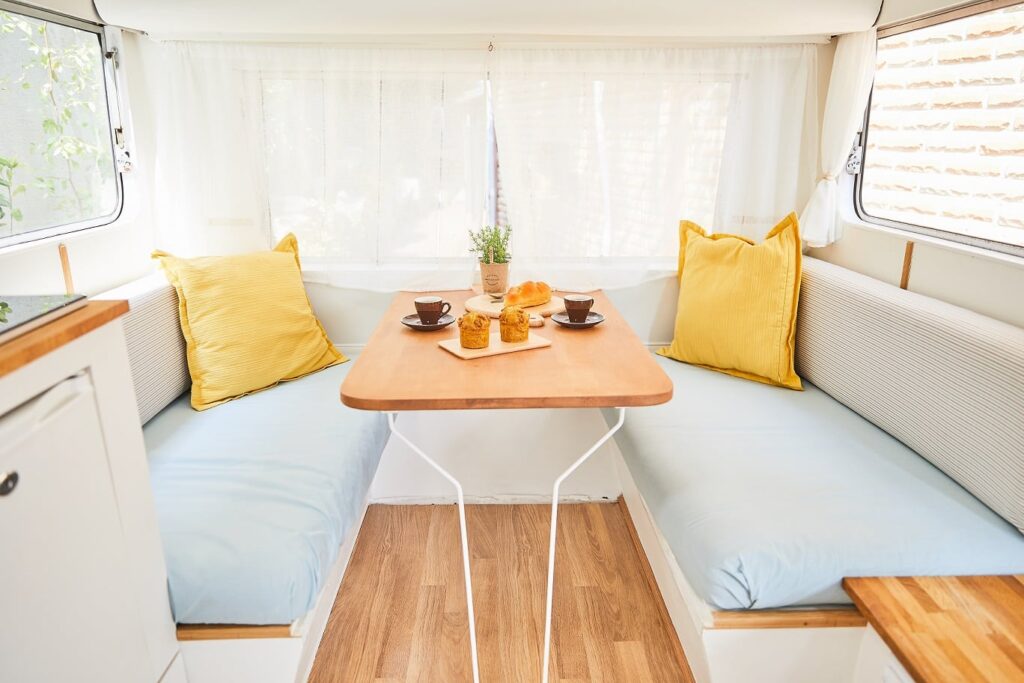
Tips for Maximizing Space:
In a caravan, every inch counts. To maximize space, consider foldable or multi-purpose furniture, such as sofa beds or dining tables with storage underneath. Wall-mounted fixtures and magnetic racks can free up floor space and keep essentials within reach. Using light colors for the interior can also create an illusion of spaciousness. Mirrors strategically placed can reflect light and further enhance the sense of space.
Choosing the Right Furniture and Appliances:
When furnishing a caravan, it’s essential to prioritize functionality without compromising on comfort. Lightweight, durable furniture that can withstand the rigors of travel is ideal. For appliances, opt for energy-efficient models that run on both electricity and battery power. Given the limited space, consider compact or multi-functional appliances, like a combination oven and microwave or a fridge-freezer combo.
Legal and Safety Considerations:
Building your own caravan comes with legal responsibilities. Depending on your jurisdiction, there might be specific regulations regarding the size, weight, and safety features of a caravan. Ensuring that your caravan meets these standards is crucial not only for legal compliance but also for the safety of yourself and others on the road.
Necessary Permits and Certifications:
Before hitting the road with your DIY caravan, it’s essential to ensure that it meets all legal requirements. This might involve obtaining specific permits or certifications, undergoing safety inspections, or ensuring that the caravan’s weight and dimensions are within allowable limits. It’s advisable to consult local regulations or a legal expert familiar with caravan standards to ensure full compliance.
Ensuring Road Safety:
Safety should always be paramount. This means ensuring that the caravan’s brakes, lights, and other safety features are in optimal condition. Regular inspections and maintenance checks are crucial to detect and address any potential issues. Additionally, when on the road, it’s essential to be aware of the caravan’s size and weight, adjusting driving habits accordingly to ensure safety for all road users.
Maintenance and Upkeep:
Owning a caravan, especially one you’ve built yourself, comes with the responsibility of regular maintenance. This ensures that the caravan remains in top condition, prolonging its lifespan and ensuring safety. Regular checks, cleaning, and addressing minor issues before they escalate can save time and money in the long run.
Regular Checks and Maintenance Routines:
A routine check-up of your caravan can prevent minor issues from becoming major problems. This includes inspecting the chassis for rust, checking the electrical and plumbing systems for any malfunctions, and ensuring that all appliances are working correctly. Tires should be checked for wear and pressure, and brakes should be inspected for efficiency. Regular cleaning, both inside and out, can also prevent issues like mold or rust.
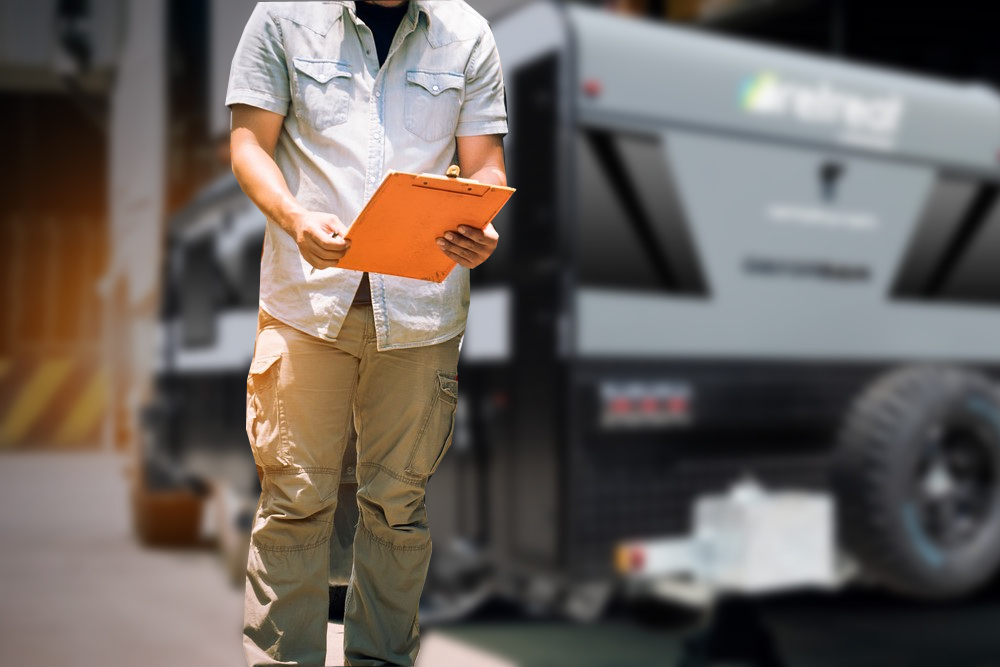
Upgrades and Modifications:
As time goes on, you might find that certain aspects of your caravan could benefit from upgrades or modifications. This could be due to wear and tear, advancements in technology, or simply a desire for change. Whether it’s upgrading to a more efficient solar panel system, adding an awning for extra shade, or redesigning the interior for added comfort, periodic upgrades can enhance the caravaning experience.
Conclusion:
Building your own caravan is a journey of creativity, determination, and personal fulfillment. It’s a testament to the human spirit’s desire for freedom, adventure, and self-reliance. From the initial design sketches to the final touches on the interior decor, every step in the caravan-building process is a reflection of your unique vision and aspirations. While the task may seem daunting at first, with meticulous planning, the right resources, and a dash of perseverance, it’s entirely achievable.
The benefits of constructing your own caravan extend beyond the tangible. Yes, there’s the undeniable pride in crafting something with your own hands, but there’s also the invaluable experience gained, the skills honed, and the memories created. Moreover, the end product is not just a mode of transport but a personalized sanctuary on wheels, tailored to your every need and preference. As you embark on your travels, the caravan becomes a symbol of your hard work, passion, and the endless possibilities that lie ahead. Whether you’re exploring scenic landscapes, visiting new cities, or simply finding solace in nature, your DIY caravan ensures that you do it in comfort, style, and with a sense of true ownership. So, to all aspiring caravan builders out there, embrace the challenge, trust the process, and let the road ahead be your guide.

